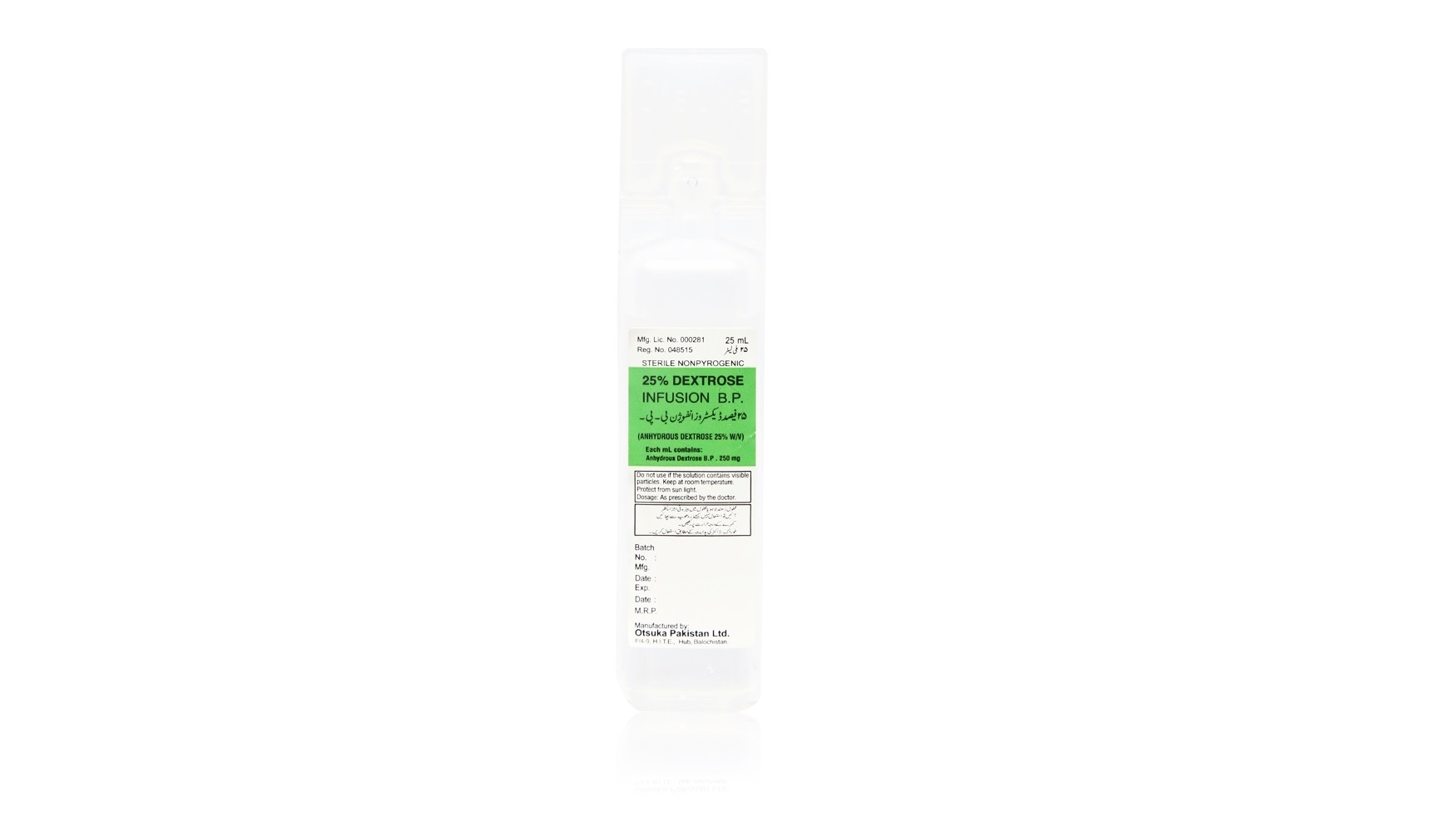
Ampoules - 25% Dextrose Injection B.P
(Dextrose 25% in Water)
Description and Composition
Glucose use depends on metabolic rate. It is stored in the liver and muscle as glycogen. Water use depends on the clinical state of the patient, body temperature, and renal function. Excreted through the skin, lungs, and kidneys.
Indications
Used as a source of energy, particularly in total parenteral nutrition.
Dosage and Administration
The dose is dependent upon the age, weight, and clinical condition of the patient. However, for non-diabetics, the maximum infusion rate should be 4 mg/kg/minute. At this rate, hepatic glucose production is minimized, and peripheral glucose uptake is maximized. Should be administered through a central vein as it can be irritating to the peripheral veins causing phlebitis.
Duration of Action and Excretion
- Glucose use depends on metabolic rate. It is stored in the liver and muscle as glycogen.
- Water use depends on the clinical state of the patient, body temperature, and renal function. Excreted through the skin, lungs, and kidneys.
Precautions
- Since the tonicity is low, avoid using it in head injury patients.
- Use sterile technique in venipuncture and equipment assembly.
- Do not use the solution if outdated, cloudy, or the seal is not intact.
- Monitor E.C.G. continuously.
- Monitor blood pressure, pulse rate, and respiratory rate frequently.
- Monitoring of blood glucose is advisable.
Osmolarity and Tonicity
- Hypotonic solution as it does not contain any cations.
- Hyper-osmolar solution (1389 mOsm/L)
Caloric Value
935 kCal/Liter
Pharmaceutical Precautions
- Store at room temperature. Protect from sunlight.
- Do not use if the bottle is leaking, the solution is cloudy, or contains foreign matter.
- Discard unused portion.
- Keep all medicines out of the reach of children.
Packaging
1000 ml in Plabottle.

